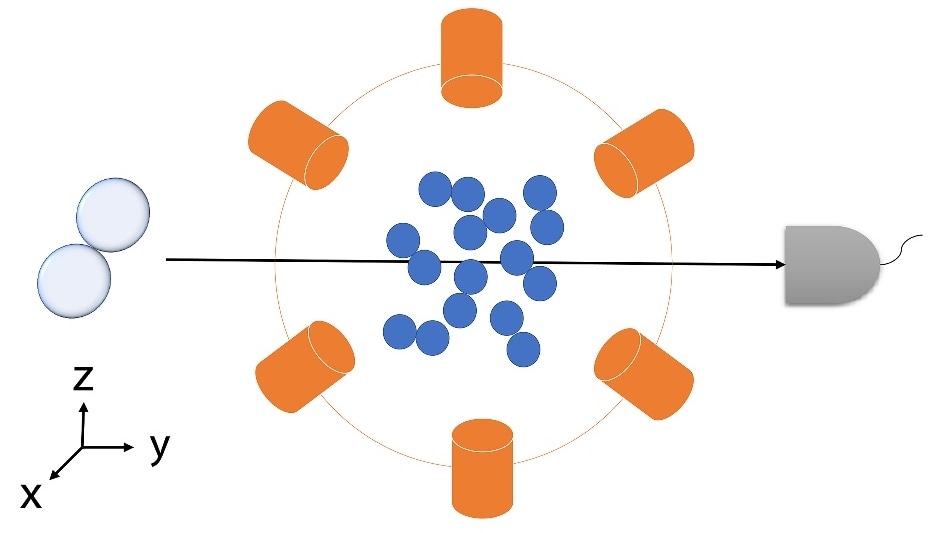Aug 5 2019
Researchers have long doubted that a quantum phenomenon might have a role to play in photosynthesis and other natural chemical reactions. However, this was not confirmed since such a phenomenon is very difficult to detect.
 Purdue researchers have modified a popular theorem for identifying quantum entanglement and applied it to chemical reactions. This quantum simulation of a chemical reaction yielding deuterium hydride validated the new method. (Image credit: Purdue University image/Junxu Li)
Purdue researchers have modified a popular theorem for identifying quantum entanglement and applied it to chemical reactions. This quantum simulation of a chemical reaction yielding deuterium hydride validated the new method. (Image credit: Purdue University image/Junxu Li)
Scientists at Purdue University have illustrated a new method to quantify the phenomenon of entanglement in chemical reactions—the potential of quantum particles to maintain a special link with each other across a long distance.
By exactly discovering how chemical reactions work, ways to replicate or reproduce them in new technologies, such as for developing enhanced solar energy systems, could be found.
The work, reported on Friday, August 2nd, 2019, in Science Advances, simplifies a common theorem known as “Bell’s inequality” to detect entanglement in chemical reactions. The scientists validated not only the theoretical arguments but also the generalized inequality through a quantum simulation.
No one has experimentally shown entanglement in chemical reactions yet because we haven’t had a way to measure it. For the first time, we have a practical way to measure it. The question now is, can we use entanglement to our advantage to predict and control the outcome of chemical reactions?
Sabre Kais, Professor of Chemistry, Purdue University
From 1964, Bell’s inequality has been extensively validated and serves as a go-to test for detecting entanglement that can be defined with discrete measurements, for example, measuring the spin orientation of a quantum particle and then deciding whether that measurement is linked to spin of another particle. If a system infringes the inequality, then entanglement is present.
However, defining entanglement in chemical reactions needs continuous measurements, for example, the different angles of beams that disperse the reactants and drive them to contact and transform into products. The outputs of a chemical reaction are determined by the way the inputs are prepared.
Kais’ group generalized Bell’s inequality to incorporate continuous measurements in chemical reactions. Earlier, the theorem had been generalized to continuous measurements in photonic systems.
The group tested the generalized Bell’s inequality in a quantum simulation of a chemical reaction for producing the molecule deuterium hydride, developing from an experiment conducted by Stanford University scientists that intended to explore the quantum states of molecular interactions, reported in 2018 in Nature Chemistry.
As the simulations validated the Bell’s theorem and demonstrated that entanglement can be categorized in chemical reactions, Kais’ group plans to further test the technique on deuterium hydride in an experiment.
We don’t yet know what outputs we can control by taking advantage of entanglement in a chemical reaction—just that these outputs will be different. Making entanglement measurable in these systems is an important first step.
Sabre Kais, Professor of Chemistry, Purdue University
The research is based on work supported by the U.S. Department of Energy, Office of Basic Energy Sciences, under award number DE-SC0019215.